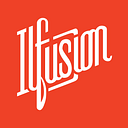How to Use Experiential Marketing to Boost Your Brand
The way a customer interacts with your brand lays the foundation for future engagements and transactions. By creating engaging, immersive, and memorable brand activities, you can leave a lasting impression on your customers and cultivate a devoted following.
This is the pivotal role that experiential marketing plays. Experiential marketing combines physical elements and interactive experiences, creating an immersive space for customers to engage with a brand.
What Is Experiential Marketing?
Experiential marketing, also known as engagement marketing, is a strategy that engages consumers using branded experiences.
Unlike traditional marketing methods that focus on selling products or services through ads and/or promotions, experiential marketing engages the senses and emotions of consumers.
Experiential marketing involves:
- creating an environment where customers can interact with your brand in a hands-on manner
- telling a story that resonates with your audience and makes them feel part of your brand’s journey, not just passive observers
Experiential Marketing Ideas to Jumpstart Your Strategy
Here are some examples and ideas of brand activities that are considered experiential marketing:
- Pop-Up Shops: Pop-up shops are temporary retail spaces that allow brands to create a unique environment that engages customers and drives sales. For instance, a fashion brand can use pop-up shops to showcase its new collection.
- Product Launch Events: Brands can host live events to introduce new products. Add an immersive experience element such as custom decor, live music, and activities that allow customers to get hands-on experiences with the product.
- Interactive Billboards: Some companies create interactive billboards to engage passersby. A notable example is Pepsi’s interactive soccer billboard, which allowed people to play virtual soccer.
- VR/AR Experiences: In the same vein, virtual or augmented reality (AR/VR) can be used to provide much more immersive experiences. IKEA, for example, has an AR app that allows customers to visualize how furniture would look in their homes.
- Brand Activations at Festivals or Trade Shows: Many brands create interactive experiences at festivals, trade shows, or conventions. Red Bull, for example, sets up adrenaline-fueled activities at sports events.
- Workshops or Classes: Brands like Home Depot or Michaels offer workshops or classes where customers can learn how to use their products while having a fun, hands-on experience.
Experiential Marketing: Benefits and Challenges
Experiential marketing offers numerous benefits, such as:
- Builds relationships with customers
- Enhances customer engagement and loyalty
- Creates a lasting impression on customers
- Establishes an emotional connection with the brand
- Generates positive word of mouth for the brand
- Drives sales in the short term
However, experiential marketing is not without challenges. Creating effective and engaging experiences requires a deep understanding of your target audience, creativity, and significant planning and execution.
There is also the risk of disengaging your audience if the experience is not properly implemented.
Additionally, these events can be expensive to organize and require a lot of manpower, making it difficult for small businesses to take advantage of.
Tips for an Effective Experiential Marketing Strategy
For marketers looking to leverage experiential marketing, here are some best practices to consider:
1. Know Your Audience
Experiential marketing is most effective when targeted to the right audience. It is important to know who your target customers are, what drives them, and what their needs are.
After all those questions are answered, curate branded experiences that align with their interests and values. This way, you can ensure that your experiences will resonate with your customers.
2. Leverage Technology
Technology is becoming increasingly important for experiential marketing. Emerging technologies like AR/VR, artificial intelligence, and machine learning can be used to create immersive experiences that could reach customers wherever they are on the globe.
Additionally, the use of technology can help measure the impact of experiential campaigns. For example, you can use customer feedback surveys or facial recognition technology to gauge their satisfaction and engagement.
3. Integrate with Other Marketing Channels
Maximize the impact of your strategy by integrating your experiential marketing with other marketing channels. A simple way to do this is to stream a live video of your physical event for your social media followers.
Additionally, you can use other channels to promote the event and drive people to your physical space. This will create an effective cross-channel campaign that reaches a wide variety of audiences.
4. Measure Success
While measuring experiential marketing can be challenging, it’s crucial to track metrics like engagement, social media mentions, and sales to gauge the effectiveness of your campaign.
Here are some ways to measure the success of your experiential campaigns:
- Social Media Metrics: Track metrics like likes, comments, shares, and hashtag mentions to measure the success of your experiential marketing.
- Sales Data: Compare sales before and after a campaign to measure its effectiveness.
- Engagement Tracking: Track the number of attendees, interactions, and survey feedback to measure engagement.
Experiential marketing offers a dynamic, interactive way to engage customers and build relationships with them. This, along with other marketing strategies, can help boost your brand’s visibility and ultimately drive more sales.
For more marketing tips, follow our blog at https://www.ilfusion.com/blog
